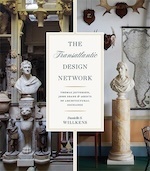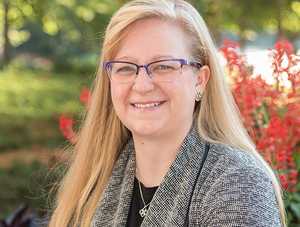Today, we are happy to bring you our conversation with Danielle S. Willkens, author of The Transatlantic Design Network: Thomas Jefferson, John Soane, and Agents of Architectural Exchange
What inspired you to write this book?
This project was initially inspired by time spent at Monticello as a summer interpreter (tour guide) after my undergraduate degree in architecture from the University of Virginia (UVA) and a subsequent research project at the archives of Sir John Soane’s Museum while I was studying for an M.Phil at the University of Cambridge. After exploring ‘behind the scenes,’ I wanted to learn more. While completing my Master of Architecture at UVA, I was fortunate to have Sir John Soane’s Museum Travelling Fellowship to investigate connections between the two sites, which later developed into my PhD dissertation. So, like the house museums, this project has been in development for a while, and I’m eager to see where some of the ongoing research may take me.
What did you learn and what are you hoping readers will learn from your book?
There is extensive scholarship on Jefferson and Soane, but few books explore the figures beyond nationalistic lenses. Once I started to map the network, I found so many meaningful connections between the two architects and their respective house museums, which made me think about other figures and sites that may feel like they already have exhaustive studies. We can always uncover and reinterpret, and digital records, finding aids, and expanded transcriptions are making this more accessible. I hope that some of the open-ended questions and connections that I present in the book will be useful for other researchers.
In terms of the structure, hopefully, the book's episodic structure will interest readers and allow them to navigate the content uniquely.
What surprised you the most in the process of writing your book?
I am continually surprised by the amount of archival material and how much remains to be discovered. My investigations into Godefroy, for example, revealed misfiled letters, and I am eternally grateful to Soane’s Museum archivist, Sue Palmer, for pointing me in the direction of his tragic shipwreck and resulting correspondence with Soane. He had deep ties to Jefferson, and several other early federal architects; and this was one of many ‘adventures’ I took along the research journey.
What’s your favorite anecdote from your book?
While researching, I went through about 2,000 letters and I loved reading the dispatches between longtime friends. They were full of gossip and familiarity, but it was also fascinating to read the affection between authors even when they had been separated for years or decades. Due to the complexities of travel, it was possible that they would never see each other in person again. It made me think differently about communication today and the transience that many of us experience as we move for school or work. To stay in touch, we have it so much easier in many ways, but we still need to care for and cultivate those important connections. Thinking as a scholar, how will those relationships be traced in the future?
What’s next?
There is much left to explore within the network, especially the realm of previously uncredited women who acted as designers, patrons, and agents of exchange. This project will always exist in some form for me because there are so many facets, sites, and personalities to study.
As an architectural historian, architectural designer, and educator, I always have a few projects in the pipeline, and they are typically informed by place-based inquiries. I’ve been in the Deep South for a decade now and have become enthralled with the documentation, advocacy, and resiliency of sites related to Reconstruction and the struggle for civil rights. I have a few ongoing projects in Selma, Atlanta, and at the Penn Center, so look out for some new publications and exhibitions!





